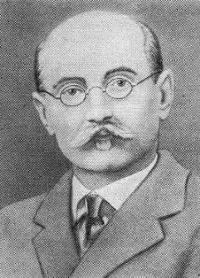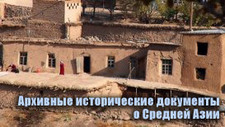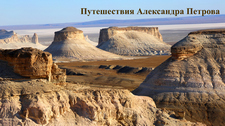You are here
V. I. Lipsky about Lake Kel-Suu in 1903.

Travels of geographers and explorers in Kokshaal-Too ridge.
“I looked back for the last time towards Aksai, at the magnificent peaks of Kok-Kiya, which remained inaccessible to me, and I was sorry to part with them without having climbed up to their mysterious lake, without having looked at least from the edge of the syrta at the descent to Kashgar, without having gone down the Aksai gorge: the weather prevented any excursion further than 8-10 versts from the camp, and October 17 reminded me that it was time to go home, to our fortifications, while the Tien Shan passes were not yet covered with snow.”
"Travel through Turkestan region and exploration of mountainous country of Tien-Shan." N. Severtsov. 1873.
Trip to Lake Kel-Suu from village of At-Bashi.
Vladimir Ippolitovich Lipsky Ukrainian scientist, botanist, since 1896 began to study the flora of the highland regions of Central Asia. The scientist explored the southern slopes of the Gissar range, Pamir-Alai, Tien-Shan, Dzungarian Alatau, Kopetdag, Fergana and Zeravshan valleys, and in many of these areas he was the first botanist.
In July 1903, V. I. Lipsky visited the northern part of Lake Kel-Suu and prepared a detailed description of the place where he visited the lake in his work “Along the Mountain Regions of Russian Turkestan,” published in 1906. Below I give an excerpt from V. I. Lipsky’s diary entries:
“I decided the next morning to visit the upper reaches of this river and see the lake I had heard about from P. P. Ivanov. Below me, not far from the Kul River, a nomad camp was visible, where my caravan was already approaching. It was a large nomad camp, located about 1/2 versts before the Tien-Shan.
There were nice grassy areas here, but they no longer resembled Aksai. True, there were absolutely no bushes here that could serve as firewood, and dung served exclusively as fuel. Having finished my inspection, I went down to the nomad camp.
In the evening it began to rain, and then snow. The night was cool. In the morning (July 23) it was even cooler. More and more of the hills and mountains were covered with fresh snow. Accompanied by two local Kirghiz, we made a trip to the lake. The moraine-shaped rampart, from which the river flows, as I have already said, is located about two miles from the camp.
But even before this rampart, huge boulders weighing tens of thousands of pounds, light in color, are scattered in the valley. Past these boulders, having crossed the turbulent river not without difficulty, we climbed up this rampart, strewn with large light-colored boulders (the color of the mountains); here, it turned out, there was a path to the lake. We reached it along this path. The lake had a very majestic and severe appearance. It lay as if in a crack among polished overhanging rocks, often almost completely vertical, smooth and without any vegetation.
Such, exactly polished rocks lay around the lake, excluding those small gates through which we entered. In the rocks above the surface of the lake and above, grottoes were visible. The severity of this picture was aggravated by the foggy weather, as well as the cold and wind. It was impossible to photograph this lake in its entirety.
Several photos taken by the photographer came out quite well and give some idea, one of which I am enclosing here. It was impossible, however, to judge its shape, since the visible part, of course, seemed roundish; and the lake was visible for 1/2 a verst. Undoubtedly, the lake had an elongated shape.
The Kirghiz who accompanied me said that last year this lake was shallow, very long and one could get along it to the Chinese borders; the river that was now visible on the right was not there then; the lake had grown after the earthquake of last year (Kashgar, 1902).
I am telling you this only because I heard that 25 years ago (see below) the lake had the same underground flow as now. I admit that this lake interested me, not so much because of its severe appearance among the overhanging rocks, but because of its mystery.
In addition, there was little open space, so to say - from those gates through which we entered, it was impossible to take a single step along the shore of the lake: there was absolutely no shore here, except for overhanging vertical cliffs, and therefore there was no way to inspect the lake.
This inspection could only have been done in a boat. It turned out that no river flowed out of the lake, and the river that I saw from afar did not flow out of the lake, but directly from under the ground, cutting, apparently, through that moraine-shaped rampart that separates the lake from the valley.
In any case, although I could not collect any information on the spot regarding this curious lake, which I had already heard about in Naryn from P. P. Ivanov, I did not want to leave it without illumination, and upon returning to Petersburg I turned to P. P. Ivanov with a request to provide some information, especially since he had been on the lake soon after me, and had been acquainted with it before.
P. P. Ivanov actually responded to me and sent, among other things, a map he had taken of not only the lake, but also the entire surrounding area, placing it at my disposal. I am attaching this schematic map here, and I consider it necessary to note the following.
At the time when I was compiling my travel report for 1903, one of the bloodiest wars in world history, the Russo-Japanese, was in progress. P. P. Ivanov was supposed to go to this war as a Cossack officer. I had no information about the participation of this sympathetic officer, who, as the head of the Atbashi section, was a rare and good expert on it; at the same time, knowing the Kirghiz language thoroughly and enjoying significant influence among the Kirghiz and loving this people, he was very much in his place.
Nevertheless, I consider myself entitled, without mentioning his name, to use the data that he gave me, and therefore, placing the map here, I will also place in full the information about the lake that is there*.
This information is contained in a letter (November 1903):
„Mr. Vladimir Ippolitovich. I send my sincere gratitude on behalf of myself and my family for the photographs, which everyone is delighted with, to such an extent, especially the waterfall, they are executed artistically. My heartfelt thanks for the books, which I will keep as a living memory of you and the short time you spent with us; I will keep them as a dear memory of a person who, despite the abyss of impressions experienced, the fleeting nature of his meeting with people abandoned on the wild outskirts, still remembers them, and this is such a rare phenomenon for me...
The returned Deacon (jiit) brought me your note; That's what I want to talk about. You confused me greatly by informing me in it that "Kul" is a tributary of the Kok-kiya River. But this, dear V. I., is a misunderstanding, which I managed to sort out in practice during my trip to Aksai.
The Kok-kiya River does not have a single tributary, except for insignificant streams that dry up by autumn. Kok-kiya originates from a lake, with which it has an underground connection. This lake has not yet been named, since Kok-kiya-kul, which the locals have to ask about it, is not the name of the lake itself, but a definition of the place where it is located.
Even the Kok-kiya River is named after the area through which it flows (Kok-kiya means "green spur", terrace, flat elevation). Therefore, if you want to ask about the Kok-kiya River, you must definitely add the word "su" (i.e. river, water), otherwise the locals will consider your question as referring to the entire area of "Kok-kiya".
But the name Kok-kiya has already become established beyond the river, which cannot be said at all about the lake, which is why I would like you to call it by its name. The Kok-kiya River is one of the most significant tributaries of the Aksai River, which, before entering the cliffs between the mountains, is also called Chatyr-tash (stones that look like tents).
This Aksai River, below the Chicharsky Pass, after the very full-flowing tributaries flow into it: Eastern Aksai, Myuduryum and Kok-kiya, is called Kak-shaal, which name is retained from the border to the city of Uch-Turfan. I explain all this with the attached drawing. In general, the drawing is correct, but since I made it from memory, that is, of course, incorrect in some things, so, for example, the length of the lake seems too long to me.
Explanation.
The places on the plan shaded in black represent steep cliffs, which is why the rivers shown between the black banks actually seem to flow in rocky corridors, as does Lake Kok-kiya-kul itself. In summer, it is possible to get to the lake only through the Kara-bel Pass, and it is possible to inspect the entire lake only in winter on the ice, and at this time it is possible to get to it through the Kara-bel Pass from its north-western end.
Translation of names:
Aksai - white ravine (channel).
Chatyr-tash - tent stones (named for similarity). Kyzyl-kungey - red slope facing the south (the sun).
Kok-kiya - green flat elevation. Kul-lake.
Tar-tarasha - gorge.
Kara-tar - black gorge. Kyzyl-tar - red gorge. Tar-kap - gorge bag (i.e. without exit). Karabel - black back.
Bel - one of the types of pass.
Kunek-saidy - put a bucket for milking mares
//. Ivanov.
This is the information that I received from P. P. Ivanov. The height of the lake is 11,500 feet. Despite the height, there was good vegetation near the lake. In conclusion, I will note about this lake that geographically it really has not yet been properly established and clarified. In the literature, however, there is information about it.
Thus, it was visited for the first time on August 28, 1879 by A. Fetisov and partly described by him in his 2 articles). In these articles it is called Yashil-kul or Lake Kulduk. For a brief itinerary of this journey, see my work 8), and there, by the way, a brief extract from a Russian article is made, where the first brief outline of the Aksai flora is given.
Undoubtedly, some strange misunderstanding occurred here: not only have I not heard these names from the Kirghiz (as well as the Kulja-tau mountains), but P. P. Ivanov, who is undoubtedly more informed than anyone else, has not heard them either: he says that this lake has no name at all, but is called somehow indirectly Kok-kiya-kul, which is not actually a name, but only determines its location.
That is why a more detailed study and illumination of this issue would be highly desirable. Having examined the lake, we left the camp and, having gone down a bit, rode west, now rising, now falling."
Geographic coordinates of Lake Kel-Suu: N40°39'04 E76°23'38

Authority and photos by:
"Across the mountainous regions of Russian Turkestan." V. I. Lipsky. 1906.







